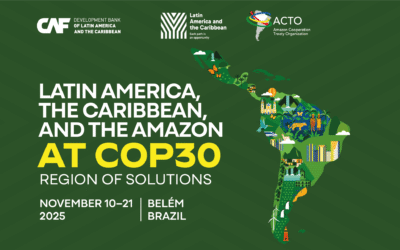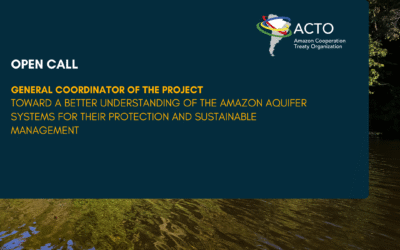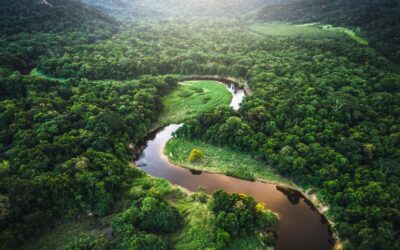More than 150 tree species have been included in Appendix II, with more than 80% of these species being endemic to the Americas.
“As you know, the effective implementation of CITES contributes to the long-term conservation and sustainable use of the world’s forests and genetic resources. After a long time without including timber trees in CITES, now this has increased a lot and this is noticeable in the species that were included in this COP 19 meeting. We saw the inclusion of more than 150 tree species in Annex II, and 80% of these species are endemic of the Americas”.
With this statement, Ivonne Higuero, Secretary General of the Convention on International Trade in Endangered Species of Wild Fauna and Flora (CITES), opened the event Tree Species: With the support of ACTO, Amazonian countries coordinate efforts for the implementation of CITES, held by ACTO on November 22, at the 19th Conference of the Parties to the Convention.
Higuero highlighted that the big job is the one that comes after listing the species in the Appendices of the Convention. Countries will have to strengthen regional cooperation in terms of knowledge and mobilization of financial resources, for example, in addition to generating information for the future formulation of Non-Detriment Findings (NDF) and legal procurement.
“I congratulate ACTO’s leadership in anticipating these needs and collaborating with all countries in the Amazon Region so that, on the day these new lists come into force, their implementation will be smooth and without complications. The work ACTO is doing now will bring many benefits,” concluded the Secretary General.
The event promoted by ACTO discussed the implementation of CITES aimed especially at Amazonian tree species. ACTO’s cooperation experience with the Amazonian countries was shared to strengthen the regional governance structure with the participation of CITES Authorities and Forestry Authorities.
Director Carlos Salinas presented the Forestry Program, the Biological Diversity Program, as well as the Forest Module that is being developed for the Amazon Regional Observatory. Salinas highlighted the work of the Amazon Cooperation Treaty Organization with member countries – Bolivia, Brazil, Colombia, Ecuador, Guyana, Peru, Suriname and Venezuela.
“There is a fact that is rarely mentioned is that around 48 million people live in the Amazon, in different cities where the population is concentrated, but also the riverside people and the Indigenous Peoples, in a varied and rich multiculturalism. The Amazon rainforest determines climatic and ecological processes necessary for the stability of global environmental mechanisms. For this reason, the crucial role of forests in the fight against climate change is recognized. In reality, everything is interrelated – biodiversity, climate change, ecosystems, population. The Amazon needs a harmonious balance between all the components that make it up”, said Salinas.
Then, Cesar Beltetón highlighted ACTO’s actions since 2020 to strengthen the capacities of CITES Administrative and Scientific Authorities and Forestry Authorities of ACTO Member Countries in the development of Non-Detriment Findings (NDF) of Cedrela spp. and the main tools available for the formulation of NDFs aimed at other tree species.
The ACTO/CITES specialist mentioned the promotion of the exchange of experiences and capabilities among the Amazonian countries in relation to neotropical tree species, with emphasis on the application of traceability and chain of custody systems, which reinforce transparency and sustainable trade in timber species; the elaboration of materials for identification and training in the different methods existing in the Amazon Region, emphasizing those that can be easily used by the authorities.
César Belteton mentioned the proposal for a Regional Action Plan for the implementation of Cedar in Appendix II of CITES, carried out within the scope of the Bioamazon Project. “For this, needs and actions to be developed in terms of NDF and relevant success stories for the management of timber species in ACTO Member Countries were identified”, he said.
Representing Peru, the Director of Conservation of Ecosystems and Species of the Ministry of the Environment of Peru, Fabiola Nuñez, thanked the opportunity to participate in the event at CITES COP19 and presented the structure of CITES in Peru, with a Working Group that articulates the actions of different Peruvian institutions.
Representing Ecuador, David Veintimilla, Specialist in Biodiversity and Focal Point of CITES at the Ministry of the Environment, Water and Ecological Transition of Ecuador (MAATE), presented the experiences in the implementation of CITES for tree species in Ecuador in the context of the contribution of the Bioamazon Project. “With the support of the Bioamazon Project, an online course was developed on the context of CITES, what the Annexes are, etc. To date, we have trained more than 150 employees,” said Veintimilla.
Kanako Ishii, representative of the International Tropical Timber Organization (ITTO) spoke about the experiences in the production of inventories, CITES courses and case studies carried out by the institution that has 12 projects in its CITES Program.
Margarita África Clemente Muñoz, a CITES specialist with extensive experience in tree species, commented that in the first CITES Conferences in which she participated, there was a lot of discussion about orchids. “Now, tree species are included, which have increased a lot. It is very important that intergovernmental institutions, such as ACTO, offer support to Member Countries to develop their capabilities”, she concluded.
The recording of the event is available at https://youtu.be/ZUDJruB9QQM
Published in Boletim Bioamazônia, n. November 18 to December 2022.
====================================================











